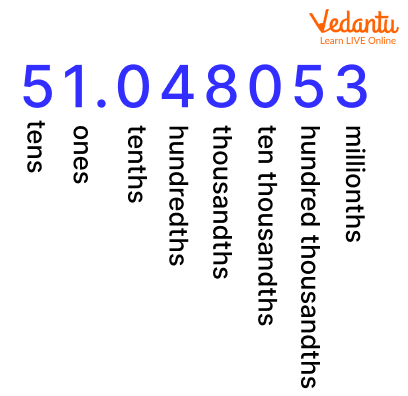If you happen to be viewing the article How to Round Off a Number to the Nearest Hundredth?? on the website Math Hello Kitty, there are a couple of convenient ways for you to navigate through the content. You have the option to simply scroll down and leisurely read each section at your own pace. Alternatively, if you’re in a rush or looking for specific information, you can swiftly click on the table of contents provided. This will instantly direct you to the exact section that contains the information you need most urgently.
Contents
What is the Concept Behind Rounding-off?
The concept of rounding-off was developed to get the approximate value of numbers in decimal because any number like 23.1345 would look odd but when we can make it simpler to 23.13 i.e., to the nearest hundredth value. Thus, rounding off makes the long decimal numbers easier to remember.
We stated that rounding-off is similar to approximation and we represent it by a symbol ≈, which is a short way to display the round-off of any number because the math works more on symbols than prolonged statements.
Now, let us get through the process of finding the round-off of a number to the nearest hundredth with solved examples.
Process to Round-off to the Nearest Hundredth
In Maths, the decimal numbers are the numbers that rely on the powers of 10, which means when we move from left to right, the place value of the number gets divided by 10.
Hence, the place value system is the best method to determine the tenths, hundredths, thousandths, and so on of the digits of any given number.
Here, tenth means 1/10, hundredth means 1/100, thousandth means 1/1000, and so on.
What is the Hundredth of a Number?
The image you can see below clearly shows the place value of a decimal number.
Representation of the hundredth place of a decimal number?
So, the digits to the left are 5 and 1, where 1 is at the one’s place and 5 is at the tens place, which means from right to left, the place value increases. Whereas going from left to right after the decimal point, we notice that the place value of ‘0’ is at tenths place or1/10, 4 at hundredths place or 4/100, 8 is at thousandths place or 8/1000, and so on.
While rounding the number to its nearest hundredth place, we must follow the given steps:
Let us assume a decimal number: 3.1736
Now, we have to round off the number 3. 1736 to its nearest hundredth value.
Step 1: Firstly, we need to recognise the hundredth digit. (Here, 7 is the digit in the hundredth position or it has the hundredth place value)
Step 2: Now, we proceed with the digit that is just next to the hundredth digit. (Here, 3 is the digit, which is just after the hundredth digit)
Step 3: Now, we need to check whether the digit next to the hundredth place is greater than or equal to 5, round up the hundredth digit, or else round down the hundredth digit. (Here, we notice that 3 is less than 5, so we round down).
Step 4: Since the digit after the hundredth place was lesser than 5 so the digit at the hundredth place remains the same as 6, as 2 is less than 5.
Hence, the number 3.1736 rounds off to its nearest hundredth as 3.17.
Examples of Rounding off to the Nearest Hundredth
Here, 2 is the digit at the hundredth place and the digit just after it is ‘3’ which is lesser than 5, so the 6.1234 rounds off to 6.12
Here, 2 is at the hundredth place and 8 is at the thousandth place which is greater than 5, so here we have a new case when 8 > 5 and ‘2’ at the hundredth place changes to ‘3’. Hence, the round-off to the nearest hundredth becomes 5.13 for 5.1289.
A Fact to Remember:
Approximately equal to sign is often used to indicate rounding of exact numbers, e.g., 9.98 ≈ 10. This sign was introduced by Alfred George Greenhill in 1892.
So, this was all about the round-off concept. The above context explains to us that if the digit at the thousandth place is lesser than 5 then we just take two places after the decimal as such (we did in an example 3.1736). However, when the same digit is greater than 5, we increase the value of the digit at the hundredths place by 1, as we did in the example of 5.1289.
Thank you so much for taking the time to read the article titled How to Round Off a Number to the Nearest Hundredth? written by Math Hello Kitty. Your support means a lot to us! We are glad that you found this article useful. If you have any feedback or thoughts, we would love to hear from you. Don’t forget to leave a comment and review on our website to help introduce it to others. Once again, we sincerely appreciate your support and thank you for being a valued reader!
Source: Math Hello Kitty
Categories: Math

